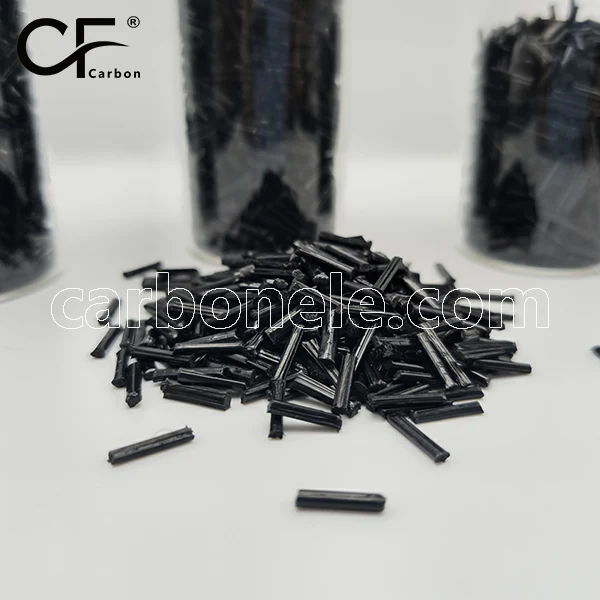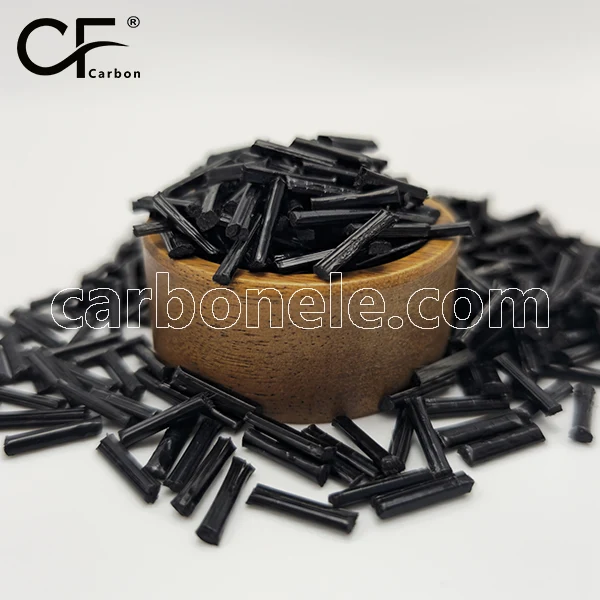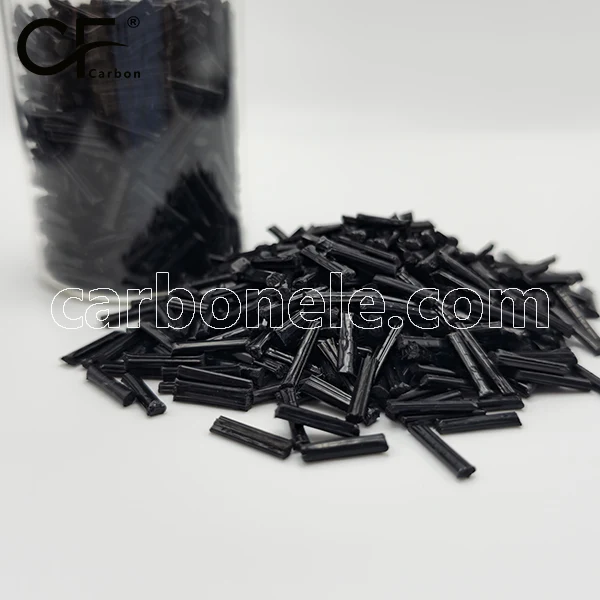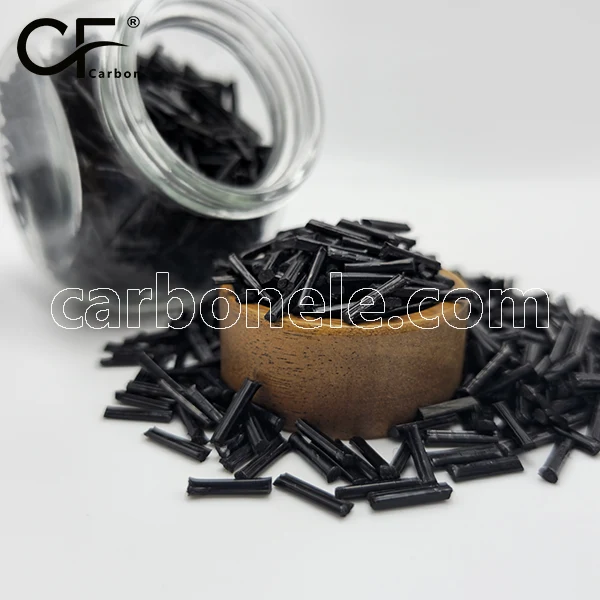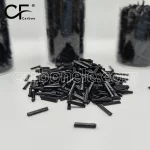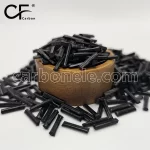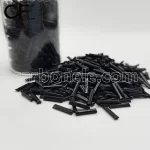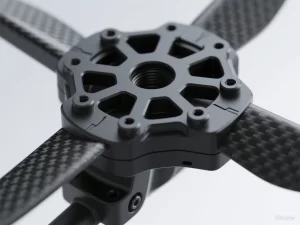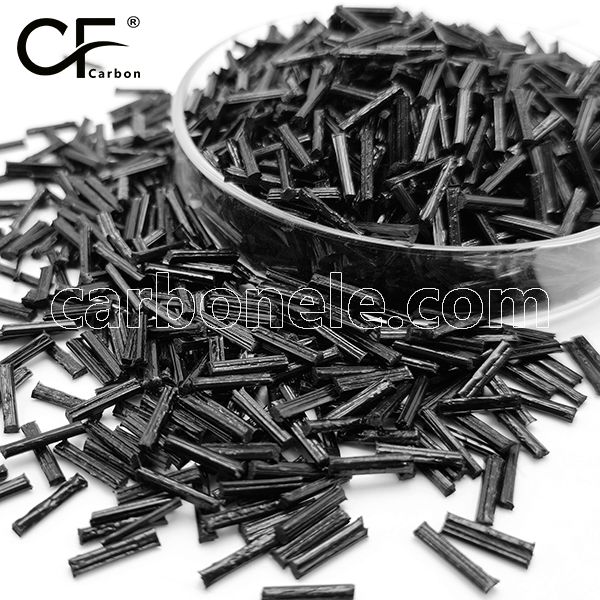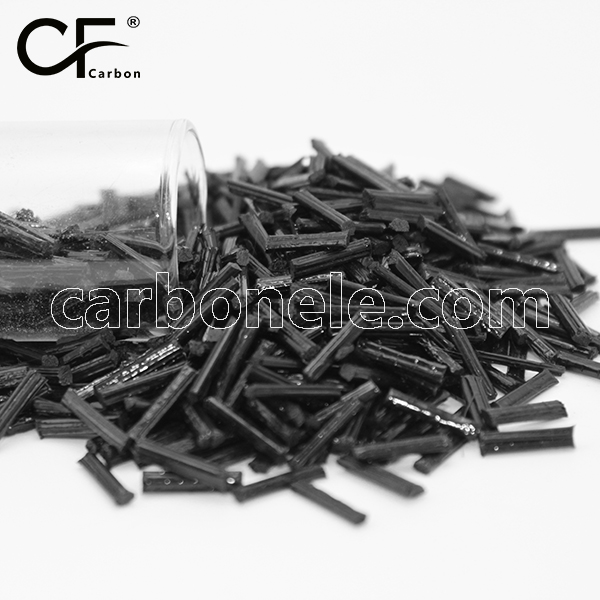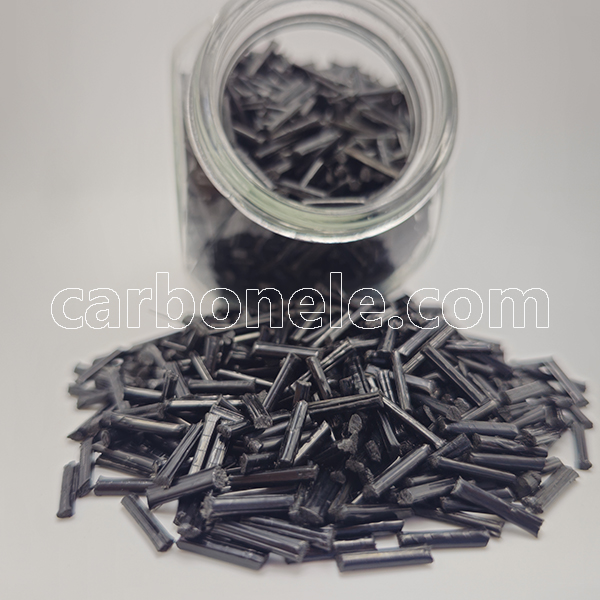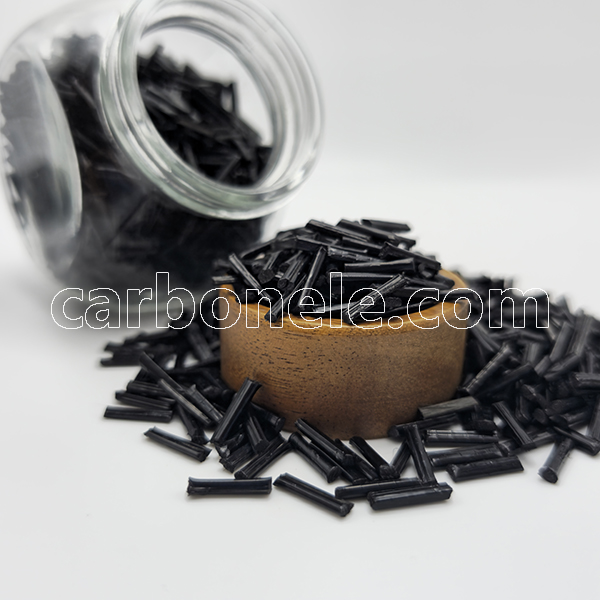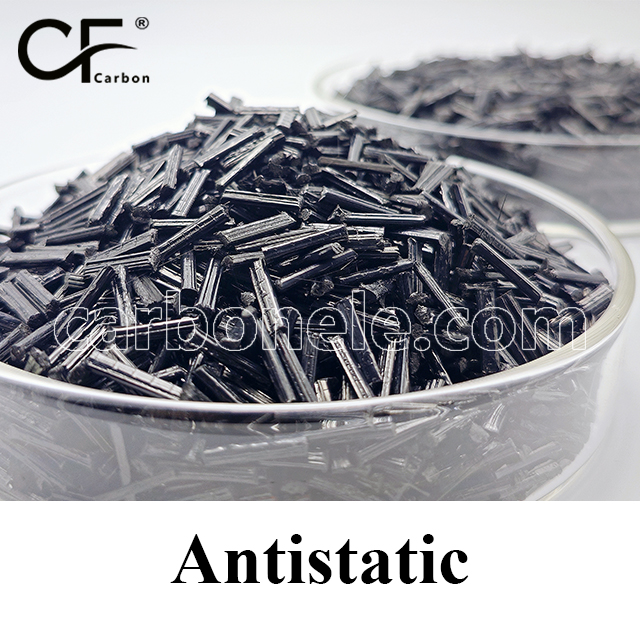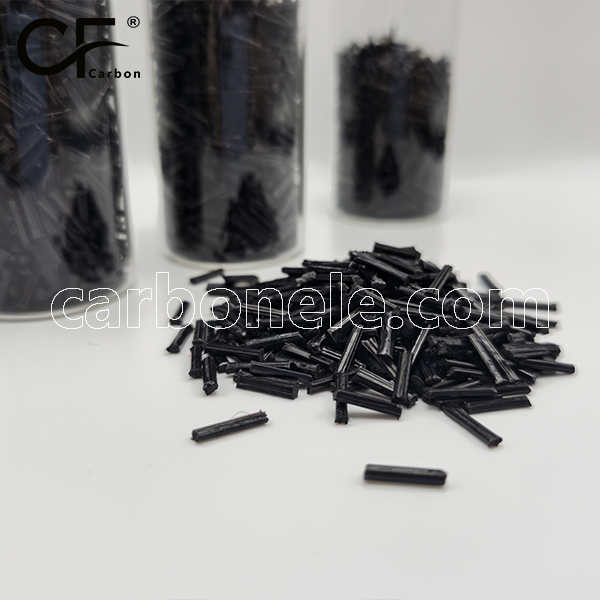
High Strength PA66 LCF40 Raw Material Particles for UAV Blade Connectors
1: Exceptional mechanical strength and stiffness
2: Superior fatigue resistance under cyclic loading
3: Low warpage and high dimensional stability
4: Good heat resistance with high HDT
5: Precise molding capability for complex parts
- Manufacturer: Carbon New Material
- OEM/ODM: Acceptable
- Color: Black
- Free samples: ≤10kg
- MOQ: 100kg
- Port: Xiamen
- Model: PA66-LCF-BCA4
- Fillers: SCF
I. PA66 LCF40 Overview
High Strength PA66 LCF40 is a high-performance carbon fiber reinforced nylon composite material. It consists of polyamide 66 (PA66) as the matrix resin, filled with 40% long carbon fiber (LCF). This unique composition grants the material exceptionally high strength, stiffness, and outstanding dimensional stability, making it an ideal choice for engineering applications.
II. Key Properties of High Strength PA66 LCF40
1. Exceptional Mechanical Strength & Stiffness
The 40% carbon fiber content significantly enhances the material’s tensile strength and flexural modulus, enabling it to withstand the immense stress and load generated by UAV blade connectors during high-speed operation.
2. Superior Fatigue Resistance
The material exhibits excellent anti-fatigue performance under cyclic loading, ensuring the structural integrity and reliability of UAV Blade Connectors during long-term repeated use.
3. Low Warpage & High Dimensional Stability
The high carbon fiber content effectively reduces shrinkage and warpage during the molding process, which is crucial for manufacturing high-precision UAV Blade Connectors via the injection molding process.
4. Good Heat Resistance
Based on the PA66 matrix, this material possesses a high heat deflection temperature, allowing it to adapt to the operating temperatures of UAVs in harsh environments and ensuring connector performance does not degrade.
III. Primary Applications
High Strength PA66 LCF40 particles are widely used in fields requiring lightweight, high strength, and durability due to their excellent overall properties. These applications include automotive engine components, industrial gears and bearings, as well as various structural and functional parts for high-end Unmanned Aerial Vehicles (UAVs), particularly the manufacturing of UAV Blade Connectors.
IV. Application in High Strength PA66 LCF40 for UAV Blade Connectors
Taking UAV blade connectors as an example, this component is a critical node for power transmission, demanding extremely high material strength, precision, and fatigue resistance. High Strength PA66 LCF40 Raw Material Particles can be used to efficiently manufacture connectors with complex shapes, thin walls, and precise dimensions through the injection molding process. Its high stiffness and low weight help improve the thrust and flight endurance of UAVs, while its superior fatigue resistance ensures an ultra-long service life for the connectors during high-speed rotation and frequent take-offs and landings, making it the preferred choice of PA66 LCF40 Raw Material Particles for manufacturing high-performance UAV Blade Connectors.
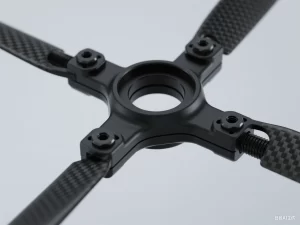
For obtaining the technical data sheet (TDS), more product information, quotations, or product catalogs, please feel free to contact us. Please note that the properties of different carbon fiber reinforced modified thermoplastic composite materials can vary due to factors such as the matrix resin, carbon fiber content and type, and production processes. The advantages of a specific composite material need to be accurately assessed based on actual application requirements and comparative testing with other specific carbon fiber reinforced plastics. Furthermore, thermoplastic composites produced by different manufacturers may have different performance emphases and variations.
Surface Resistivity Comparison
Conductors < 10⁵ Ω/sq. Antistatic Materials 10⁵ ~ 10¹² Ω/sq. Insulators > 10¹² Ω/sq. Static-Dissipative 10⁶ ~ 10¹¹ Ω/sq. *Key Influencing Factors Humidity: Increased moisture can reduce resistivity (e.g., in polymers). Temperature: Affects carrier mobility (↑ heat may lower semiconductor resistivity). Surface Contamination: Dust/oils alter readings significantly. Additives: Carbon black, metallic fillers can lower resistivity. *Applications Electronics: Antistatic materials (10⁶–10⁹ Ω/sq) prevent electrostatic discharge (ESD). Aerospace: Composites must control resistivity to avoid charge buildup. Medical Devices: Insulating materials (>10¹² Ω/sq) ensure patient safety. *Examples Polypropylene (PP): ~10¹⁶ Ω/sq (excellent insulator). Carbon Fiber Composites: 10³–10⁶ Ω/sq (static dissipation). ESD Flooring: 10⁶–10⁹ Ω/sq.
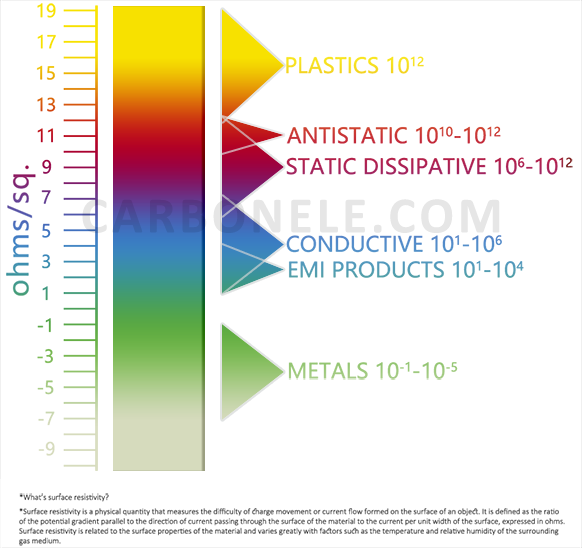
Get to Know Carbon Fibers
The table presents key performance data of carbon fiber grades. T300, with a tensile strength of 3530 MPa and a tensile modulus of 230 GPa, has a relatively low tensile elongation at break of 1.5% and a body density of 1.76 g/cm³. As the grade increases, for example, T700S shows an enhanced tensile strength of 4900 MPa compared to T300, while maintaining the same tensile modulus but with a higher elongation at break of 2.1%. T800S and T1000G both have a tensile modulus of 294 GPa, and their tensile strengths are 5880 MPa and 6370 MPa respectively. T1100G stands out with the highest tensile strength of 7000 MPa and a tensile modulus of 324 GPa. Generally, with the increase in product grade, the tensile strength and modulus tend to rise, while the density remains relatively stable around 1.8 g/cm³.

How to Buy?
If you want to obtain information such as product specifications, performance, and price, choose a suitable product according to your own needs. Meanwhile, you can ask the manufacturer to provide samples for testing to ensure that the material meets your usage requirements. If you are interested in purchasing this composite material, please contact the manufacturer Carbon (Xiamen) New Material directly.
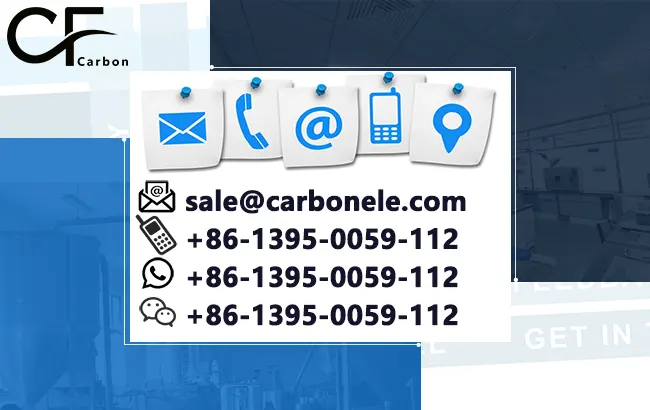
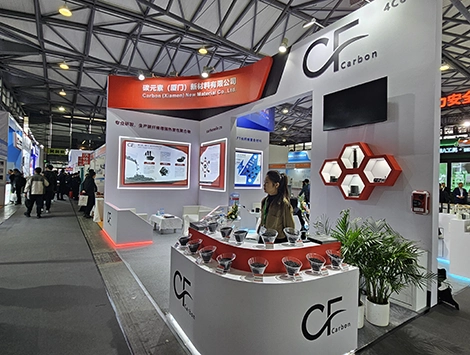

Frequently Asked Questions
Carbon (Xiamen) New Material Co., Ltd. aims to provide buyers with "one-stop" worry-free high-quality services. Here you can find all information about carbon fiber engineering plastics. If you still have questions, please send us an email for consultation!
-
How can I contact the manufacturer of a product that interests me?
When you find a product you are interested in, you can contact the manufacturer directly by sending an email and we will get back to you as soon as possible.
-
How do I find the products that interest me?
All you need to do is enter the keyword, product name in the search window and press the Enter key on your keyboard. Your search results page will then be displayed. You can also search within the product category pages on the home page. Each category is divided into subcategories, allowing you to refine your search and find products that interest you.
-
Where will I find a buying guide?
Please contact our after-sales service directly and we will provide you with a comprehensive operating guide.
-
What are CF Reinforced Thermoplastic Composites?
CF Reinforced Thermoplastic Composites are materials where carbon fibers are incorporated into a thermoplastic matrix. They combine the strength and stiffness of carbon fibers with the processability and recyclability of thermoplastics. For instance, they are used in automotive parts like bumper beams.
-
What are the benefits of CF Reinforced Thermoplastic Composites over traditional composites?
The key benefits include faster production cycles, easier recyclability, and better impact resistance. They also offer design flexibility. An example is in the manufacturing of consumer electronics casings where complex shapes can be achieved more easily.
-
How are CF Reinforced Thermoplastic Composites processed?
Common processing methods include injection molding, extrusion, and compression molding. Injection molding is widely used for mass production. For example, in the production of small components for the medical industry.
-
What industries use CF Reinforced Thermoplastic Composites?
They are utilized in aerospace, automotive, medical, and sports equipment industries. In aerospace, they can be found in interior components. In the medical field, they might be used in prosthetics.
-
How does the carbon fiber content affect the properties of the composites?
Higher carbon fiber content generally leads to increased strength and stiffness but may reduce ductility. A moderate content is often balanced for specific applications. For example, a higher content might be preferred in structural parts of a race car.
-
What are the challenges in using CF Reinforced Thermoplastic Composites?
Challenges include higher material costs, complex processing equipment requirements, and ensuring uniform fiber dispersion. Issues with adhesion between the fibers and the matrix can also arise. An example is in achieving consistent quality in large-scale production.







